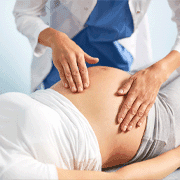Laparoscopic Gallbladder Stone Treatment: All You Must Be Aware Of
In This Article
Laparoscopic Gallbladder Stone Treatment: All You Must Be Aware Of
Sidharth
Updated on February 01, 2024
Medically verified by Dr. Arya
Fact checked by Dr. Sharon

Laparoscopic
12 min read
In this blog, we'll explore gallbladder stones step by step. We'll begin by understanding what these stones are. We'll then discuss why they develop and how they can lead to various symptoms.
Our main focus will be on introducing you to laparoscopic surgery. This special procedure is less invasive and has many benefits compared to traditional surgery. We'll explain how the procedure works and why it's a great option for you.
What Are Gallbladder Stones?
Gallbladder stones are like tiny rocks that can form in your gallbladder. Your gallbladder is a small, pear-shaped organ located on the right side of your belly, right under your liver. It's a special storage place for something called bile, which helps your body digest food.
Imagine gallstones as little pebbles, but they can vary in size. Some are as tiny as a grain of sand, while others can grow as big as a golf ball. Some folks get just one gallstone, while others may have several at once.
Symptoms of Gallbladder Stones
Now, let's talk about what happens when these gallstones start causing trouble. Sometimes, they don't give you any signs or symptoms at all. But when they decide to act up, you might experience:
1. Sudden and Sharp Pain: It usually hits you in the upper right part of your belly, and it can be really intense.
2. Belly Pain: Sometimes, the pain shows up in the middle of your belly, right below your breastbone.
3. Back Pain: It might feel like a dull ache between your shoulder blades.
4. Shoulder Pain: Oddly enough, you might even feel pain in your right shoulder.
5. Nausea and Vomiting: You could feel queasy and throw up.
These signs and symptoms can be your body's way of telling you that something's not right with your gallbladder. If you're experiencing any of these, it's essential to reach out to a healthcare professional for guidance.
Causes of Gallstones
Now, let's explore what might cause these gallstones to form. While doctors don't have all the answers, here are some things that could be at play:
1. Too Much Cholesterol
Your body uses something called bile to help digest food. Normally, bile dissolves cholesterol. But sometimes there's too much cholesterol for the bile to dissolve. The extra cholesterol can turn into gallstones.
2. Excess Bilirubin
Sometimes, liver conditions or blood disorders can make your liver produce too much bilirubin. This can also contribute to gallstone formation.
3. Gallbladder Fails To Empty Itself
Sometimes your gallbladder doesn't empty out all the bile like it should. That bile can become extra concentrated, which makes it more likely to form stones.
Who’s At Risk Here?
Now, let's talk about who's more likely to have gallstones. Remember, it's not just one thing but often a combination of factors that can lead to gallstones.
1. Family History: If others in your family have had gallstones, it could run in the family.
2. Being Female: Unfortunately, women are more prone to gallstones than men.
3. Age Matters: Getting older, especially over 40, can increase your chances.
4. Heritage: If you're of Native American or Mexican descent, the risk is a bit higher.
5. Weight: Being overweight or obese can make gallstones more likely to appear.
6. Diet Choices: Diets high in fat and cholesterol but low in fibre can contribute.
7. Physical Activity: Not getting much exercise isn't great for your gallbladder.
8. Hormones: Using birth control pills or hormone replacement therapy can be a factor.
9. Pregnancy: Being pregnant can sometimes lead to gallstones.
10.Medical Conditions: If you have diabetes, certain intestinal diseases like Crohn's, or liver conditions like cirrhosis, it can raise your risk.
11. Medications: Some medications used to lower cholesterol can play a role.
12. Quick Weight Loss: ou've lost a lot of weight rapidly, that can also be a risk factor.
Treating Gallstones
When it comes to gallstones, treatment depends on how they're affecting you. If they're not causing any trouble, there's usually no rush for surgery.
Surgery becomes necessary when a gallstone blocks one of your bile ducts, leading to what doctors call a "gallbladder attack." It's a sharp, intense pain in your belly that can last for quite a while.
Most folks with gallstones end up having their gallbladders removed. Don't worry, you can still digest food just fine without it. Your doctor might recommend one of two procedures:
1. Open Cholecystectomy
In this approach, your doctor makes larger cuts in your belly to take out the gallbladder. You'll spend a few days in the hospital afterward. This method is necessary if you have a bleeding disorder, severe gallbladder disease, significant obesity, or if you're in your last trimester of pregnancy.
2. Laparoscopic Cholecystectomy
This is the more common choice for gallstones. It's less invasive and generally easier to recover from.
Regardless of the type, you'll be given general anaesthesia, which means you'll be asleep during the procedure. This ensures you won't feel anything while the skilled medical team takes care of you.
What is Laparoscopic Surgery?
Laparoscopic surgery is a special way of doing surgery that's much gentler on your body. It's sometimes called keyhole surgery or minimally invasive surgery. Here's how it works:
1. Tiny Incisions
Instead of making a big cut, the surgeon makes 2 to 4 really small cuts in your tummy area.
2. Creating Space
The first thing they do is put a tube into one of those small cuts. This tube puffs up your tummy with carbon dioxide gas. It's a bit like blowing up a balloon. This puffed-up tummy gives the surgeon a clear look at the gallbladder and enough space to work comfortably.
3. The Camera
Now comes the interesting part. They put in a special tool called a laparoscope. It's like a tiny camera that sends pictures of your insides to a screen in the operating room.
4. Surgery in Comfort
With this clear view, the surgeon can slide in the tools they need through the other small cuts. These tools are like tiny arms that can do the surgery without making a big fuss inside you.
5. Wrap-Up
Once the surgery is done, they let the air out of your tummy and close up those small cuts with stitches. It's much easier on your body compared to the older way of doing surgery.
So, in a nutshell, laparoscopic surgery is a gentle way to fix things inside you with small cuts, like using a tiny camera and special tools to get the job done.
 9 min read
9 min readTop 9 Things To Know About Laparoscopic Treatment for Pregnancy
 9 min read
9 min readHow Much Does Laparoscopy Treatment Cost? Here's The Truth
 8 min read
8 min readTreatment After Laparoscopy for Pregnancy - What You Need to Know
Get a Callback Now
Benefits of Laparoscopic Surgery
Now, let's talk about why laparoscopic surgery is often the preferred choice. Here are the advantages:
1. Smaller Scars
The cuts made during this procedure are tiny compared to the larger cuts needed in traditional surgery. This means less pain and a smaller scar.
2. Faster Recovery
Because the cuts are small, your body doesn't have to work as hard to heal. That means you can get back to your normal activities sooner.
3. Shorter Hospital Stay
With laparoscopic treatment, you usually don't need to stay in the hospital as long. You can often go home the same day or after a short stay.
4. Reduced Complications
Smaller incisions mean less risk of infections and complications after surgery.
5. Less Pain
Because the procedure is less invasive, you'll experience less pain during and after the surgery.
6. Quicker Return to Normal Diet
You can usually get back to your regular diet sooner after laparoscopic surgery compared to traditional surgery.
| Experience | Open Surgery | Laparoscopic Surgery |
| ------------- | -------------- | ------------------------ |
| Scars | Large | Small |
| Blood | Loss | MoreLess |
| Hospital Stay | 4-7 days | 1-2 days |
| Recovery | 1-2 weeks | 3-5 weeks |
In short, laparoscopic surgery is a gentler, more patient-friendly approach to treating gallstone. It means less pain, a quicker return to your daily routine, and a better quality of life for you.
Getting Ready for Surgery
Before the day of your surgery, your healthcare team will prepare you to ensure everything goes smoothly. They will perform some tests, such as:
1. Abdominal Ultrasound: This helps them get a clear picture of your gallbladder and the stones.
2. Blood Tests: They'll check your blood to make sure everything is in good shape.
3. Urinalysis: This is just a fancy word for checking your urine. It helps them understand your overall health.
They will also have a chat with you about:
1. Medications: They'll want to know what medications you're taking, just to make sure everything is in order.
2. Pain Control: They'll discuss how they'll manage any pain you might feel during and after the surgery.
Your surgeon might ask you to avoid eating or drinking for a few hours before the procedure. Don't worry, they'll let you know exactly when.
What to Expect on the Day of Surgery
1. Anaesthesia Administration
The anaesthesia will be given through a vein in your arm. It's what helps you sleep through the whole thing.
2. Breathing Tube
They'll gently put a small tube down your throat to help you breathe. You won't feel this, and it's just to keep you comfortable.
3. Surgery
With you resting comfortably, your surgeon will perform the cholecystectomy. They'll do this either with a laparoscopic or open procedure, depending on what's best for you.
Possible Risks and Complications
Every surgery, including laparoscopic cholecystectomy, comes with a few potential risks, but please know that these are quite rare:
1. Bile Leaking: Sometimes, a tiny amount of bile can escape into your body. It's usually not a big issue and can often heal on its own.
2. Bleeding: There might be some bleeding, but your surgical team is highly skilled in managing this if it happens.
3. Complications from Anesthesia: Anesthesia is safe for most people, but there can be rare complications. Your anesthesiologist is an expert in making sure you're safe during the procedure.
4. Hernia: In very rare cases, a small hernia can develop at one of the incision sites. This can often be fixed with another simple procedure.
5. Injury to Bile Ducts, Liver, or Intestines: Your surgeon is highly trained to avoid this, but it's on the list just in case. Rest assured, they'll take every precaution.
6. Peritonitis: This is a big word for inflammation and infection in the abdomen. It's extremely rare, and your medical team is vigilant about preventing it.
Taking Care of Yourself After Surgery
Now, let's talk about what you should do to help yourself recover after your laparoscopic cholecystectomy:
1. No Heavy Lifting: Avoid lifting heavy objects for a while. Let your body heal without straining it.
2. Stay Hydrated: Drink plenty of water. It helps your body recover and function well.
3. Fibre-Rich Foods: Eat foods with lots of fibre. This will help your bowel movements get back to normal after surgery.
4. Follow Medical Advice: Do what your healthcare provider tells you. Take care of your wounds as instructed, and take any medications as prescribed.
5. Gradual Activity: Slowly start increasing your activity level. Don't overdo it, but moving around a bit is good for you.
6. Daily Walks: Try to take short walks every day. This helps prevent blood clots and keeps your body in good shape.
Getting Back to Normal Activities
You might be wondering when you can get back to your regular routine. Here's a rough idea:
1. Driving and Eating: In about a day or two after the surgery, you should be able to drive and eat normally.
2. Work and Daily Activities: You can usually return to work and your daily activities in about a week, as long as they don't involve heavy lifting.
3. Physical and Sexual Activity: For more physically demanding or sexual activities, you might need to wait for a week or two. It's important to listen to your body and not rush into things.
Remember, everyone's recovery is a bit different, so don't be too hard on yourself. Follow your doctor's advice, and you'll be back to your usual self in no time.
Diet Changes After Surgery
After your gallbladder surgery, it's important to adjust your diet to help your digestion work smoothly. Here's what you should keep in mind:
1. Watch the Fat
Try not to eat high-fat foods, fried or greasy dishes, and fatty sauces for at least a week after your surgery. Instead, opt for fat-free or low-fat foods.
Low-fat foods have no more than 3 grams of fat in a serving. You can find this information on food labels. Following the recommended serving size is key.
2. Boost Fibre
Fibre is your friend. It helps keep your bowel movements regular. Include soluble fibre in your diet, like oats and barley.
But don't rush into it – slowly increase your fibre intake over several weeks. Too much fibre too soon can cause gas and cramping.
3. Moderate Meals
Consider having smaller, more frequent meals. This can help your body mix available bile more effectively. A balanced meal should consist of small portions of lean protein, combined with plenty of vegetables, fruits, and whole grains.
Remember, there's no one-size-fits-all gallbladder removal diet. It's all about finding what works best for your body and gradually adapting to these changes. Your overall health and comfort are the main goals here.
Gallstones: Tiny, hard deposits that can cause pain and discomfort in your abdomen.
Causes: Factors like high cholesterol, excess bilirubin, and gallbladder function can contribute to gallstone formation.
Risk factors: family history, gender, age, obesity, diet, and more.
Laparoscopic surgery: A minimally invasive procedure that uses small incisions and a camera to treat gallstones.
Benefits: Smaller incisions, faster recovery, shorter hospital stay, reduced complications, less pain, clearer view, and quicker return to normal diet.
Before Surgery: Tests, medication discussions, fasting, and general anaesthesia are part of preparing for surgery.
Complications: While rare, complications may include bile leakage, bleeding, anaesthesia issues, hernia, organ injury, numbness, inflammation, and small scars.
Recovery: After surgery, avoid heavy lifting, stay hydrated, eat high-fibre foods, follow medical advice, and gradually increase activity.
Diet post-surgery: Limit high-fat foods, increase fibre intake gradually, and opt for smaller, more frequent meals to aid digestion.



